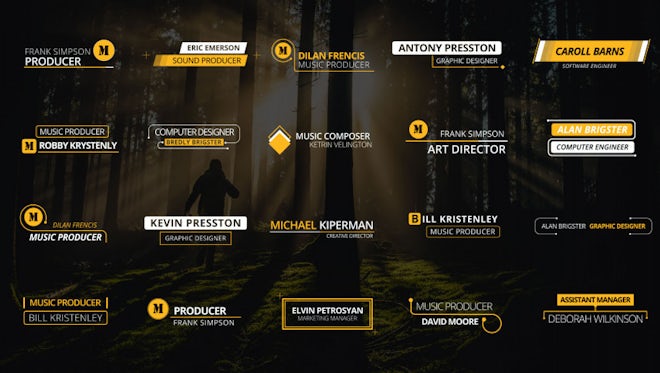In the previous movie we learned how to create a title, and we took advantage ofsome of the presets.In this one, we are going to create a lower third from scratch.So once again, I'm going to pick a representative frame-and these are all prettystandard-to create a lower third for Brian Dash, our installer.With my playhead parked over a representative frame, once again, I am going togo back to Title, New Title, and choose Default Still. Click OK.And as you see, we have a picture of Brian, and we're ready to start creating our lower third.Now I do want to point out something that's pretty important to take note ofwhen creating any kind of a title or actually to realize whenever you'recreating any video that could be broadcast onto a television set in someone'shome, and that is these two little boxes. The outer one is called Action Safe,and the inner one is called Title Safe.On many TV sets, the viewer doesn't see anything beyond this outer ring andthis is by design when people create television sets to make sure they have a nice clean image. This course introduces Adobe Premiere Pro CS6, using a project-based approach that introduces video editors to all the skills necessary to cut their own program.
Using a short commercial project as an example, author Abba Shapiro walks viewers through a complete and logical workflow that begins with importing media, creating a basic rough edit, and then refining the cut with music and sound effects, transitions, visual effects, and titles. The course also includes troubleshooting advice, such as reconnecting offline media and using the History panel to undo multiple actions.
Free Music For Adobe Premiere
In My Templates view, you can do the following:. Enter a keyword in the search bar to quickly find exactly what you are looking for. Use the checkboxes as filters to view templates available locally, or across your Libraries. Use hover scrub to preview animations for templates that include video thumbnails. Sort Motion Graphics template by Recently Used or by Title.
Favorite a Motion Graphics template by clicking its star icon. Then use the Favorites filter near the search bar to quickly view all your favorites at once.
Use the Info View to rename and add tags to your Motion Graphics templates for quick organization and searching. Data-driven Motion Graphics Templates can contain three types of data:. Text.

Color. NumbersThe author sets the data type for each column in After Effects, and the data types cannot be changed in Premiere Pro. When unmapped, the types translate as a text string for text data, a hot text slider for numbers data, or a hexadecimal value with a color swatch for color data (for example, #EE0473). Mapped data show as labels, disabled for manual entry.

For more information on creating these Motion Graphics templates in After Effects, see. Note:Premiere Pro automatically maps a column in the mogrt to a column of the attached spreadsheet when the headers match.
To map a column that could not be mapped automatically, choose the data from the drop-down list. If the column of the spreadsheet does not appear in the drop-down list, it is because the data types do not match.
Mapping occurs on a column-for-column-basis, where one column can read the data from the spreadsheet, and therefore be locked for manual changes, while another column can be unmapped to make manual changes. To customize a template, select the template in your sequence. To change the template properties as desired, select Essential Graphics panel Edit.Depending on the type of Motion Graphics template, you can:. Choose color, source text, animation options from a range of choices provided to you by the template author. Edit properties such as fonts, font size, faux styles, and much more. If the After Effects author has created groups of controls, you can open and close your groups, and use the properties within the group.